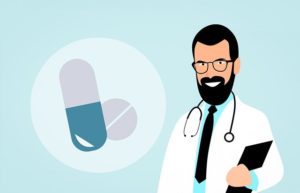
Have you ever been waiting in line at your local pharmacy and watched as the pharmacist behind the counter tries to juggle filling prescriptions, answering patients’ questions about their prescription, giving flu shots, talking on the phone to insurance companies and doctor’s offices, answering questions from pharmacy technicians, and more?
It is almost enough to make you wonder how a pharmacist can manage to fill your prescription accurately. Unfortunately, pharmacists are human and they can, and do, make mistakes.
Pharmaceutical Error Statistics
Recent statistics on pharmacist error rates and medication mistakes are limited, but there is some data about adverse drug events (ADE). An ADE is defined as “harm experienced by a patient as a result of exposure to a medication.” Reportedly, nearly 700,000 emergency department visits and 100,000 hospitalizations happen every year due to adverse drug events.
It is easy to see how this is possible when you realize that there are lots of chances for errors to be made between when a doctor prescribes a medication and when the patient receives it.
Most Common Pharmaceutical Errors
The types of human errors in the pharmaceutical industry include mistakes made by doctors, physician assistants, pharmacists, pharmacy technicians, nurses, and others. Some of the most common errors are:
- Wrong medicine – Doctors often abbreviate drug names and these can be confused. For example MS (morphine sulfate) could be mistaken for MSO4 (magnesium sulfate). Even if the name is written out, many drug names look alike or sound alike. For example, oxycodone could be confused with codeine or diazepam could be confused with diltiazem. Sometimes a prescription is illegible or entered incorrectly into a computer.
- Wrong dose – A clinician may have written mg (milligrams) instead of mcg (micrograms). Or the dose may have been miscalculated. This is especially true for drugs whose dosage is based on weight.
Medications Most Commonly Involved in an Error
While not directly related to mistakes by pharmacists, a recent study listed the 10 drugs most commonly implicated in AEDs requiring treatment in a hospital emergency department. The drugs included:
- Painkillers such as aspirin, hydrocodone (with and without acetaminophen), and Ibuprofen
- Antibiotics such as amoxicillin(s), cephalexin, trimethoprim-sulfamethoxazole and penicillin
- Insulin
- Anticoagulants
You can obtain prescription-strength medicines of these drugs at local and mail order pharmacies. It is advisable to know how to protect yourself from pharmaceutical errors and what to do if a pharmacist makes a mistake.
Safety Tips for Protecting Yourself against Pharmaceutical Errors
You can protect yourself and your family members from medication errors. Whether you are receiving a prescription for the first time or getting a refill, you can protect yourself against mistakes.
Make it a habit to always:
- Read the prescription label. Be sure the label matches your name, your doctor’s name, and the name and correct dosage of the medication. Talk to the pharmacist if there are any mismatches.
- Examine the contents before you leave the pharmacy or consume the medication. Open the bag and look at the label and packaging. Prescription packaging comes in many forms: vial, bottle, blister pack, box, etc. If you receive your medication from a mail-order pharmacy, open and look before you consume the medicine. If you are not sure about anything, talk to the pharmacist or call the pharmacy.
- Read the patient information packet (PIP). Not all drugs are required to have patient information packets (PIP), but many drug manufacturers voluntarily supply them. If you are given a PIP, read it. Confirm your reason for taking the medication is mentioned in the packet.
For prescription refills, look for and examine:
- Changes in appearance, smell or taste – Examine the color, shape, and markings on the medicine and label. If the pharmacy has changed suppliers, they should alert you if the medicine looks, smells, or, tastes different from what you may have received in the past.
- Changes in amount – Does the pill vial or liquid in the bottle or syringe contain more or less than the expected or prescribed amount?
- Changes in directions – Do the instructions on the prescription label match those given to you by your doctor?
If after taking the medication, you experience unexpected side effects, do not start to feel better, or do not experience an improvement in your symptoms, call your doctor.
If you believe a pharmacist made a mistake with your medication, and you have been harmed because of it, you can get help in the Virginia Beach area from the personal injury lawyers at Ruloff, Swain, Haddad, Morecock, Talbert & Woodward, P.C.
Contact Ruloff, Swain, Haddad, Morecock, Talbert & Woodward, P.C. for Help Now
We understand how medication errors can result in damages to a person’s health. If you have been harmed as a result of a medication error, our lawyers will fight to seek full and fair compensation for you.
Our firm has served clients throughout Virginia Beach and Virginia’s Tidewater region for over 30 years. We have earned a reputation as a firm of talented and compassionate lawyers. We want you to feel confident that your medication error case is in good hands.
Call us today for a free no-obligation case evaluation.
